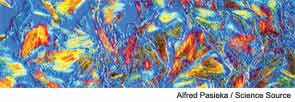
WASHINGTON, D.C.—A number of challenging and unresolved issues regarding hyperuriciemia were addressed during a session titled, “Gout and Hyperuricemia: Diseases Beyond the Joint,” here at the 2012 ACR/ARHP Annual Meeting, held November 9–14. These issues included the treatment of gout in patients with chronic kidney disease (CKD) as well as a discussion of the potential use of uric acid levels as a predictive marker of cardiovascular disease and incorporating that marker into the clinical assessment of patients at high risk for cardiovascular disease. [Editor’s Note: This session was recorded and is available via ACR SessionSelect at www.rheumatology.org.]
Gout Treatment in Patients with CKD
Although CKD is common in patients with gout and complicates gout management, effective treatment and preventive strategies are available. “For most patients, gout can be effectively managed even in the context of significant comorbid diseases that so often accompany gout,” said Ted R. Mikuls, MD, MSPH, professor of internal medicine in the division of rheumatology at the University of Nebraska Medical Center in Omaha.
However, he emphasized that successful treatment in these patients typically requires “very judicious dose adjustments of medications accompanied by patient education and appropriate surveillance.”
For example, Dr. Mikuls presented information on the appropriate use of allopurinol in this setting based on current data and guidelines. Although there has been some concern about the use of allopurinol in patients with CKD because of their increased risk for the development of allopurinol hypersensitivity syndrome (AHS), Dr. Mikuls emphasized that appropriate initial dosing followed by gradual titration of allopurinol likely mitigates this risk. He cited the 2012 ACR gout management guidelines on the use of allopurinol that emphasized a starting dose of 50 mg/day for patients with stage 4 or worse CKD (and no greater than 100 mg/day for any patient) and then titrating a maintenance dose every two to five weeks to appropriate maximum dose.1 The guidelines state that the dose can be raised above 300 mg a day even in patients with renal impairment if the patient receives education and monitoring for drug toxicity. For patients who are intolerant to allopurinol or at high risk of developing AHS, he said that febuxostat and pegloticase are good alternatives.
For the prevention of acute attacks that complicate the use of urate-lowering therapies, Dr. Mikuls said that colchicine is a good option but needs to be adjusted for renal function. For normal renal function to moderate CKD, he said the dose is 0.6 mg once daily or twice daily, and for severe CKD, the maximum dose is 0.3 mg daily, with dosing every two to three days. Overall, he said that the use of colchicine for prophylaxis requires vigilance because of the increased risk for myopathy, neuropathy, and cytopenias as well as important drug–drug interactions with such drugs as macrolides and statins.

